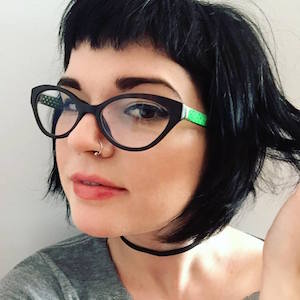 The Constrictions series consists of black and white drawings with entangled shapes and intricate line-work rendered by a felt tip pen on print making paper. These delicate marks are a systematic response from one additive accumulation to another. Each drawing is essentially an illustration narrated through a personal visual language.
The Constrictions series consists of black and white drawings with entangled shapes and intricate line-work rendered by a felt tip pen on print making paper. These delicate marks are a systematic response from one additive accumulation to another. Each drawing is essentially an illustration narrated through a personal visual language.
The origin of this stylistic approach lies in a genre of music and iconography. I was introduced to psychedelic music and art at a young age and became fascinated by posters and album artwork of bands like 13th Floor Elevators, Jefferson Airplane, and Pink Floyd. Besides being mesmerized by the bright colors and hallucinatory imagery indicative of psychedelia, I was captivated by the idea of visual manifestation through sound and vice versa. I would stay up late listening to music and drawing patterns of animals in topographical landscapes reminiscent of the art I so dearly loved. As I matured, I researched well known illustrators and designers such as David Carlin, Victor Moscoso, and Wes Wilson. Through these artists, I learned how to employ visual communication through pattern, color, and composition.
I entered art school with the intent of becoming a figure painter and practiced drawing as a preparatory process. I still used chromatic colors and patterns around my painted figures, but thought of them as merely decorative. These patterns and shapes often implied movement and confinement in textured materials such as cellophane or string; a reaction to my burgeoning interest in experimental music, art, and culture. Learning about art movements such as Dada, Fluxus, and Surrealism helped me rekindle my passion for drawing. Surrealist artists like Max Ernst, Hans Bellmer, and Andre Masson influenced my realization that drawing can be a holistic medium and not just a means to an end.
After graduating college, I began the Constrictions and stopped using colors and imagery characteristic of psychedelia and Surrealist painting altogether. Instead, I chose a monochromatic palette of black ink on white paper to maintain the immediacy of the process and integrity of every permanent mark. Not having to mix my own pigments nor switch brushes allowed me to apply principles of Surrealist automatic drawing, similar to my method as a child.
Through combining my studies and experimentation, I have begun to develop my own visual language independent from the work of my role models and peers. Every drawing is an entry to a catalog of shapes, patterns, and textures laid out to the viewer as a map for personal interpretation. I am currently researching new materials and processes with the objective to expand my lexicon.
